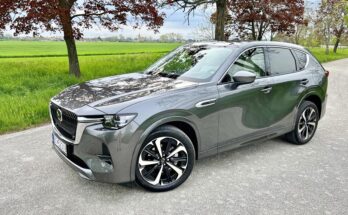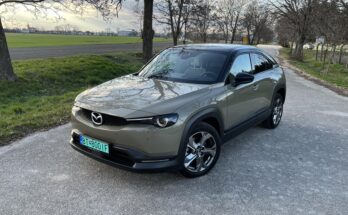Mazda is one of the few brands that goes its own way in today's world of mammoth automobile concerns. Her bet on being different pays off and she can develop everything on her own, often completely unique solutions that other brands in their conservatism do not dare to. Mazda 3, a car belonging to one of the most important automotive classes, is exactly as it should be for this brand. Where others try to unify and satisfy the widest constellation of customer types, the new "troika" goes about it completely differently…
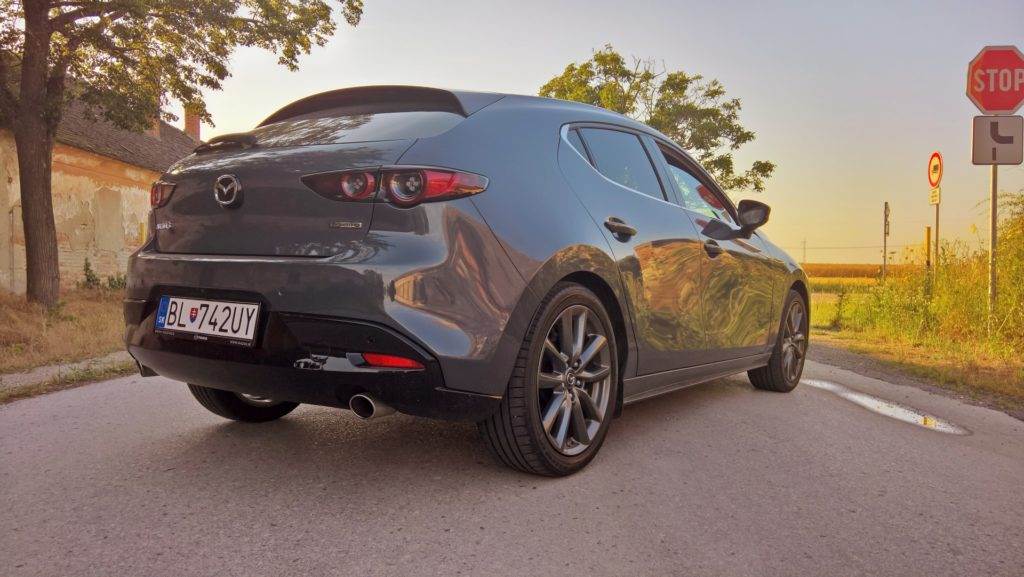
A lot has already been said about how good the new Mazda 3 looks on various social networks and online magazines. For some, the beautiful packaging, which further embellishes the Kodo philosophy, hides top-notch technology, which is often completely unique in Mazda's presentation. Kota Beppu's program manager was given a clear assignment – the trio should be "the object of universal desire". Together with designer Ikuo Maeda, they managed to fulfill the task to the letter. They designed a simply beautiful car.
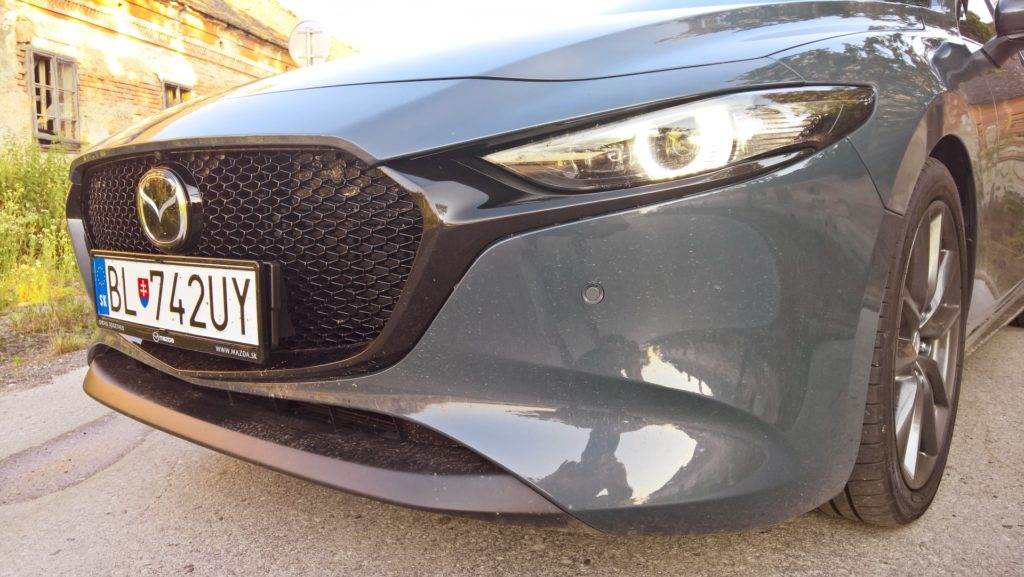
The new trio has an irresistible figure, a distinctive face and an interesting rear. In addition, it is endowed with several technical innovations, so it will enchant even followers of technical disciplines. With the new trio, Mazda emphasizes minimalist aesthetics and cleanliness even more. The elongated, slim and long hood is further optically reduced by the low-positioned headlights. The radiator grille is framed by black strips and looks really amazing in gray metallic, which changes its shades in the sun.
In reality it looks even better than in the photos and does a great job of disguising how big it is from the outside. The hatchback is four and a half meters long without four centimeters and the wheelbase is a respectable 2725mm.
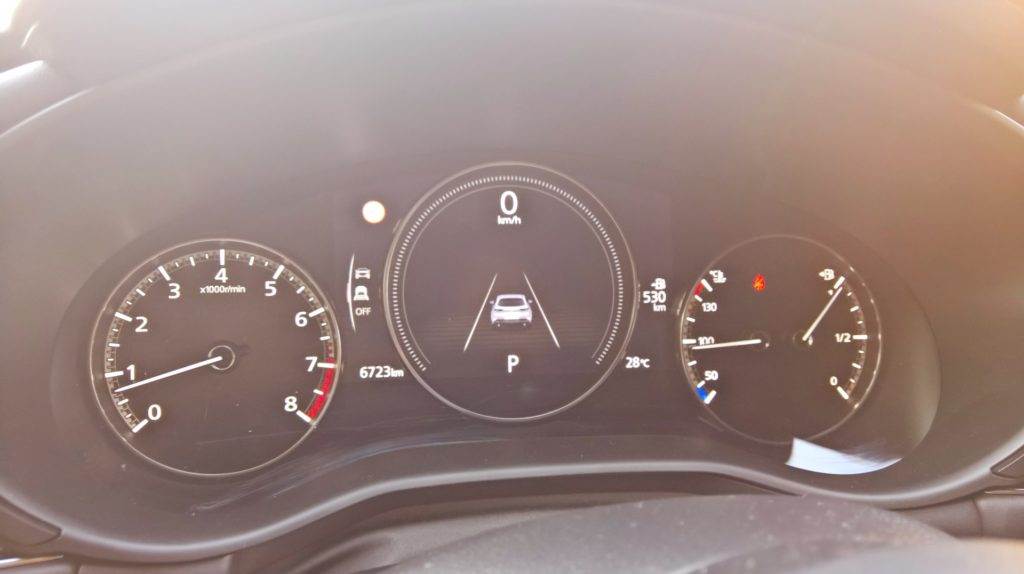
Inside, the Kodo philosophy continues, and the horizontally divided instrument cluster is just as great as the outside. You will appreciate the great workmanship and valuable materials, which is a big improvement over previous generations. Alarm clocks on the instrument panel are classic analog with a central one in the form of a circular LCD display. It offers only two different modes, namely analog with a hand (which can be full or in the center of the info from the on-board computer) and digital with speed display. The on-board computer can display the maximum average consumption, and this is where its function ends. In digital mode, the speed and car pictogram are displayed. Maximum unused potential of the display – but apparently within the whole philosophy of not distracting the driver's attention.
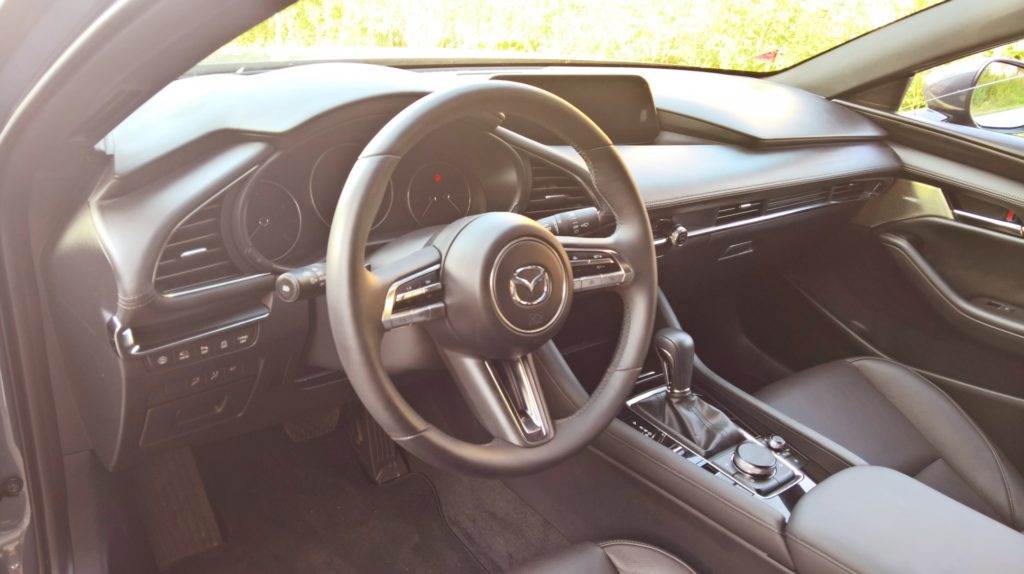
The display of the "touchless" infotainment, on the other hand, is far up on the instrument panel, so that it is as much as possible in the driver's field of vision and so that it is not tempting to touch it with your hands. Which would be completely unnecessary, because Mazda dropped the touch function and adapted the control and operation to the circular controls on the center tunnel. Controlling the basic settings is fast and intuitive, but it will take a while for the average person to get used to it. However, controlling Waze or the Spotify app with AndroidAuto link is a button ordeal in live streaming. What could be done with two touches goes through 5 turns and clicks of the controller. Personally, I would rather pay extra for the option of a touch screen with a larger diagonal, but… customers seem to like it this way.
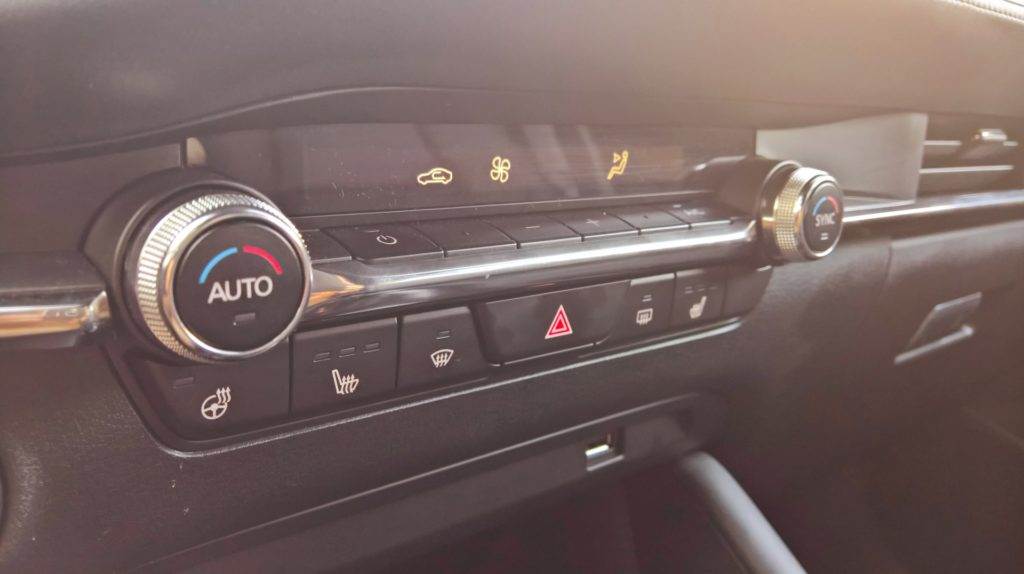
The air conditioning control is also mechanical, which is very intuitive, but it's hard to press buttons that aren't backlit. The processing and control of the ventilation vents is also specially conceived. Those that blow air on the upper part of the driver's and passenger's body are integrated into the instrument panel, but the direction of the air flow can only be regulated vertically and not laterally. The two vents behind the steering wheel, on the other hand, are great and can be adjusted well for gentle hand blowing.
Also great is the design of the seats, which match the philosophy of the brand and provide direct contact between the driver and the car. The side guide is also adapted for more robust characters and you won't slip out of them in the first sharp guarantee. The minimalist instrument cluster is crowned by a large steering wheel with a raised logo, which is great to hold, but it was its size that bothered me. A slightly smaller bezel would be more indicative of a sporty tuning. However, the steering is great, quick and responsive.
Taller figures may feel a bit cramped inside. There is an unusually low roof, narrow side windows that are higher than usual, and also the black ceiling does not help the impression of the space very much. Characters with a height of up to 190 cm will fit… above that it will probably be a bit of a problem, because the driver's seat is a bit high even in the lowest position. With my 186 cm, I had only a few cm above my head.
Inside, the designers also paid a lot of attention to soundproofing and vibration suppression. For example, the carpets and ceiling upholstery are made of special noise-absorbing material, and the speakers have been moved to the very top of the doors so that the doors can be blocked from the road at the bottom. However, the branded audio from BOSE still plays excellently.
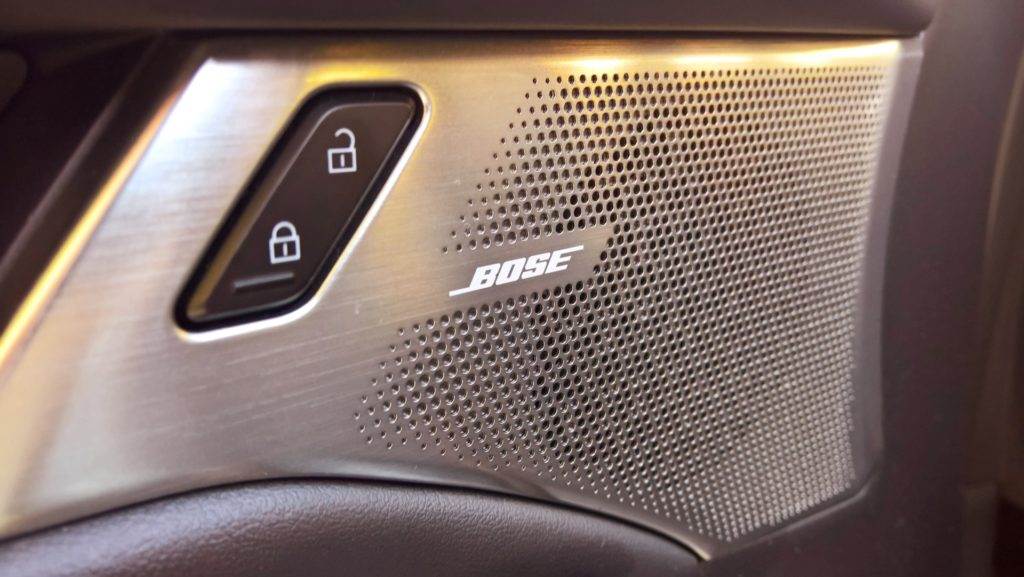
Eight years after the introduction of the first Mazda with Skyactiv technology, the Mazda 3 comes with a completely newly developed technical basis and a new platform. This should serve as the basis for the next generation of the brand's models.
In order to increase the strength of the skeleton compared to its predecessors, the developers changed the location of the upper shock absorbers and the partition between the engine and the cabin. New beams connecting the front and rear have increased the rigidity of the body in diagonal directions. 30 percent less movement is now transmitted to the opposite corner. In hatchbacks, the body's stiffness is reduced by the large entrance opening to the trunk, and in the threes, the designers went the route of maintaining extreme stiffness at the expense of practicality. The edge through which the load is lifted into the luggage compartment is very high here. The massive C-pillar slightly reduces visibility towards the rear, and the rear window is also quite small for the driver to have a proper rearward view. If the driver turns around while reversing, he will see less, but if he uses a 360-degree camera with a fine resolution, parking will be a breeze.
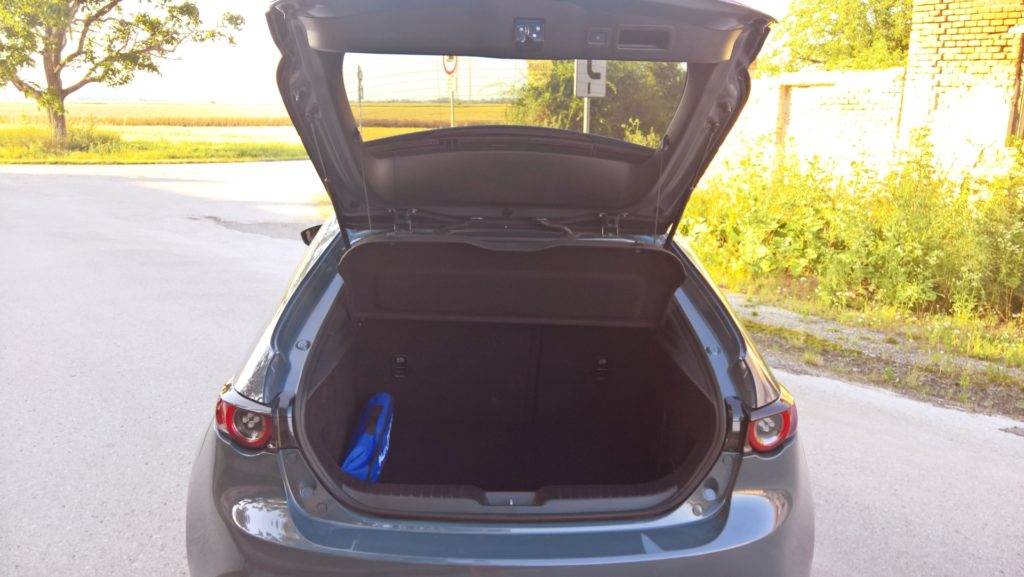
The entire body is made of steel, which is cheaper than aluminum alloys and, with the same construction and use of the same amount of material, is also stronger. Steel can also be found on the chassis, where the rear axle is formed by a torsion bar, which is more space-saving and lighter. Although it will be against the grain of Internet experts and passionate believers of multilink, it is still true that a well-tuned torsion beam is better than a poorly adjusted multi-element rear axle. Here the chassis is tuned very well.
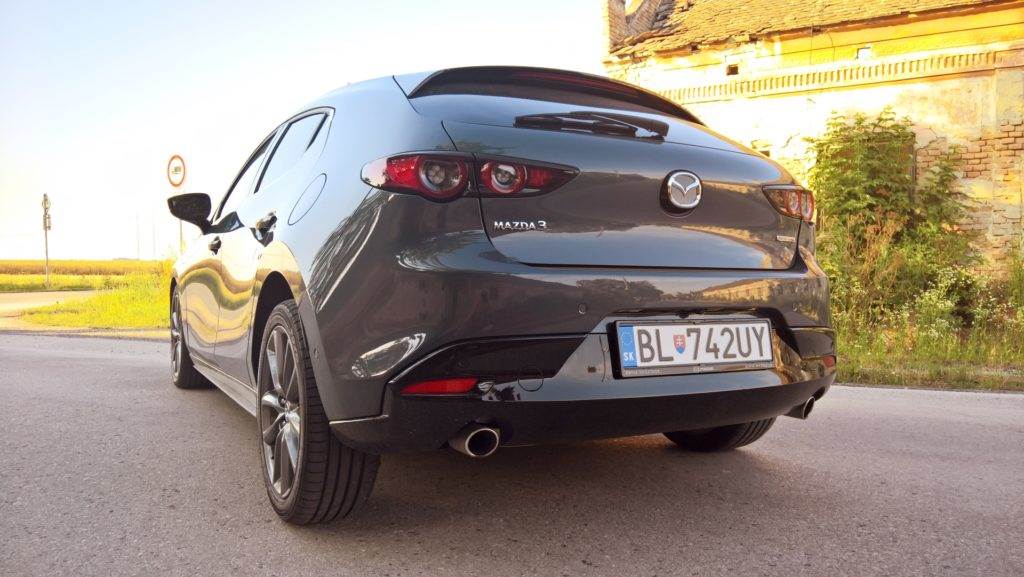
The fourth generation of the three will be able to get all-wheel drive, which is still rare in this category today. The 4×4 drive is taken from the CX-5 model and is made up of a lamellar inter-axle clutch. Compared to the taller SUV, it has a modified calibration to send more power to the rear axle. Even in the 4×4 version, the rear axle is formed by a torsion bar. However, it will only be available with the new, unique Sky-X gasoline engine, which should be available in the fall.
The "braking by wire" system is also a specialty. The brake pedal does not act on the hydraulic brake circuit directly, but through an electronically controlled element. In order to meet the requirements of the legislation insisting that there must be a direct fixed connection between the pedal and the brakes, there is, however, a mechanical connection in reserve in case of a malfunction. Under normal conditions, however, the driver controls the sensor with the pedal, which controls the brake system according to various parameters. The result is, among other things, a faster onset of braking force, a better response that shortens the braking distance and also limits the transfer of unwanted vibrations to the pedal. The onset of the brakes is more lukewarm, but the system is tuned for progression and you only need to brake a few times and it's intuitive. The same system is used by the latest Alfa Romeos and hybrid Toyotas.
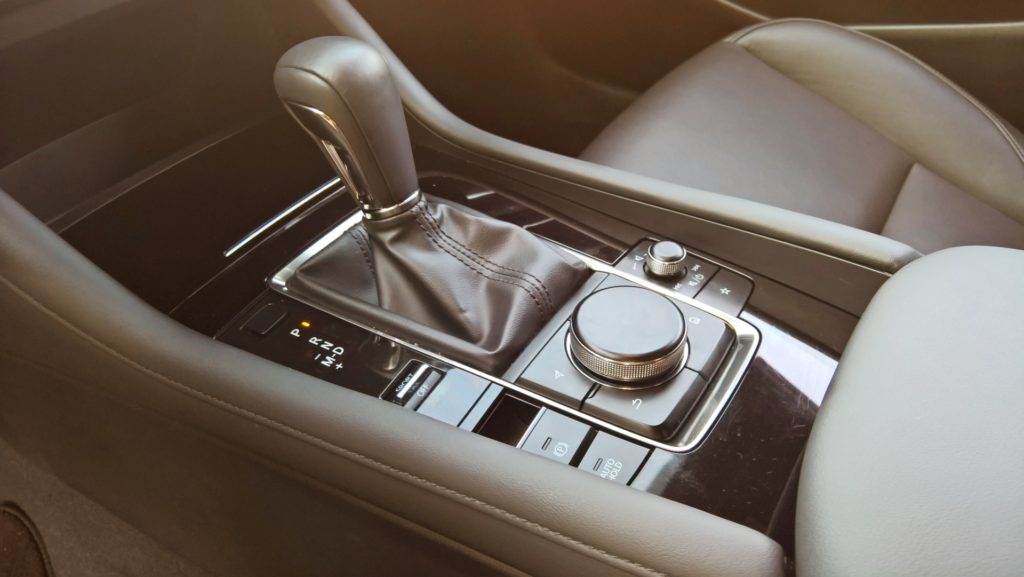
Mazda 3 is currently going on sale with two engines. Gasoline atmospheric four-cylinder with a volume of 2L, equipped with a system of switching off half of the cylinders when working under low load, and a turbodiesel 1.8L unit, which replaced a pair of turbodiesels 1.5 and 2.2L. Our test piece has a two-liter petrol under the hood and its 122 atmospheric horses (90kW and 213Nm) has quite a decent performance. At a cold start in the morning, it sounds like a metallic sound of the 90s, but at normal cruising speeds it is perfectly quiet and you practically don't know about it when moving slowly through the city. Although the performance parameters are not amazing for a two-liter, it will convince you with its behavior and willingness to rev up.
He gets along very well with the gas pedal and you just have to turn it and accept the fact that the consumption, despite the mild-hybrid technology and cylinder deactivation, will be higher than in the case of a three-cylinder engine with half the volume. With a manual transmission, it would definitely be a level higher, but the classic 6-speed automatic kills the sporty tendencies a little. In sport mode, it simply downshifts more often and keeps higher revs. However, it still turns off the cylinders and does not deactivate the Start/Stop system. This is again typically Mazda and works in such a way that the engine is purposefully stopped in a suitable position and then started from there by injecting fuel into one cylinder and turning the engine slightly backwards in order to increase the compression in the other cylinder, where the firing is then carried out. This is all helped by a special starter and battery, and the manufacturer states that the engine start-up reaction time is under 350ms.
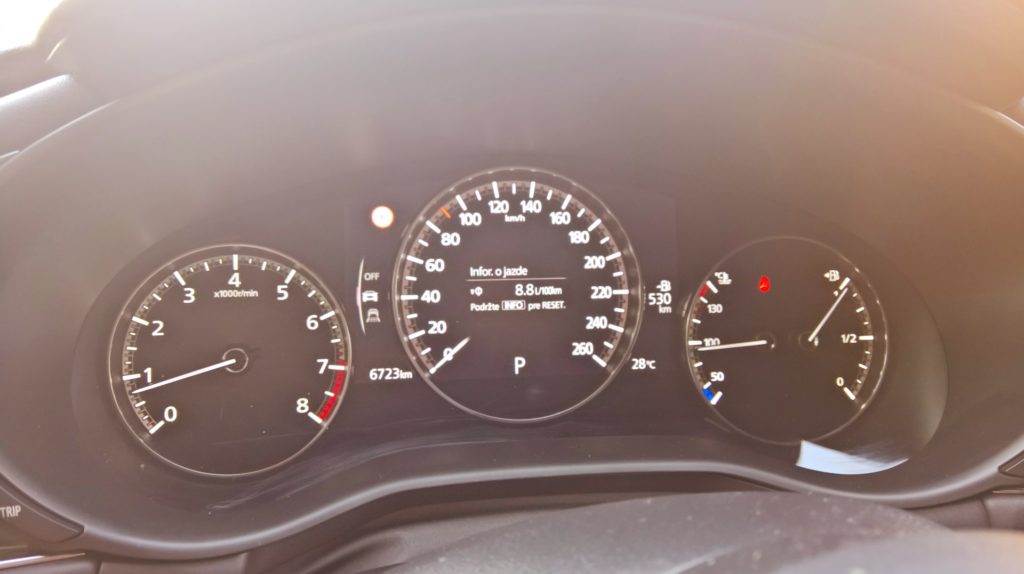
Three-wheelers with this engine are much more suited to turns, where the driver will appreciate the immediacy of the four-cylinder's reactions and, above all, the already mentioned, superbly tuned chassis. It works perfectly and is definitely faster than the engine, and that's how it should be. The triple is perfectly controllable, stable and readable even at higher speeds.
Despite the sporty touch and inclination to dynamic driving, there is comfort inside and the inclinations are minimal. This is facilitated by a unique system. which "smooths out" the ride by calming body movements. Mazda wants to give its cars buoyancy and calm with the help of the unique G-Vectoring Control Plus system.
This improves the behavior of the chassis by targeted intervention in the output parameters of the engine and thus improves controllability and comfort. The system regulates the engine torque transmitted to the wheels depending on how the driver turns the steering wheel. The basic intention is to transfer weight and load the front wheels when entering a corner to increase traction and turn the car smoothly. The electronics achieves the tilting of the car forward by taking off the gas easily. Of course, the chassis construction also had to be adapted to different tire parameters. The wheel suspension acts in a vertical direction, which eliminates opposing forces. Steering remains conventional with a fixed gear. Mazda does not want to use the increasingly widespread variable transmission, which changes the steepness of the steering while turning the steering wheel. Active kinetics at its best…
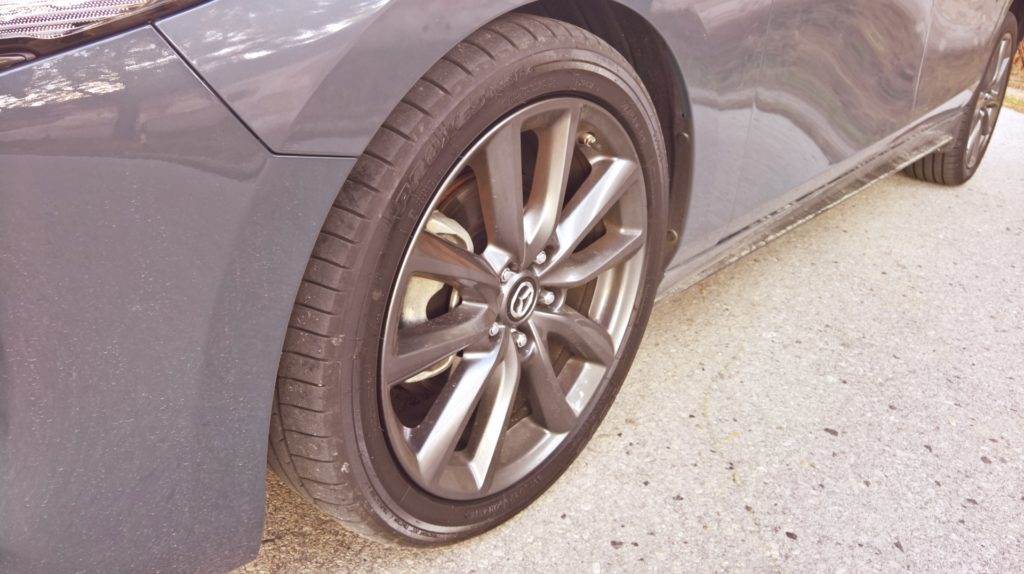
Mazda 3 continues to belong to models that have their own character and follow a different path than the mainstream. The base price of the Mazda 3 for the Slovak market is set at €19,990. A fully equipped model, such as the tested specimen with Plus/Safety/Sound/Style/Luxury equipment, costs €28,285.
Nowadays, the Mazda 3 with a two-liter gasoline engine is an extremely attractive offer for those who still want an "honest" atmosphere, both in terms of engine and driving. This is one of the last ordinary cars that is a joy to own and especially to drive. No supercar, but in short a car that is pleasant to drive… and there are a lot of them these days.
| Technical specifications | Mazda 3 2019 2.0 Skyactiv-G 122 |
| Engine type: | Spark plug |
| Cylinders / valves: | 4 / 16 |
| Displacement (ccm): | 1998 |
| Highest power (kW(k) / rpm) | 90 (122) / 6000 |
| The highest twist. torque (Nm / rpm): | 213 / 4000 |
| Gearbox: | 6-st. automatic |
| Acceleration 0 – 100 km/h (s): | 10.4 |
| Combined consumption – WLTP (l/100 km): | 5.5-7.1 |
[rl_gallery id=”6014″]


